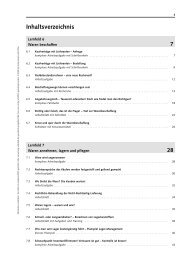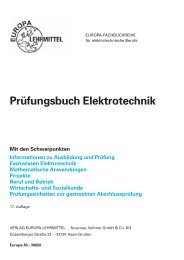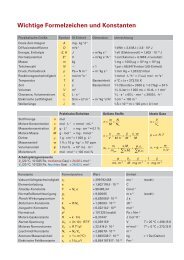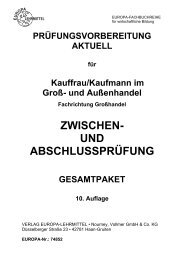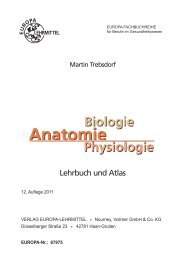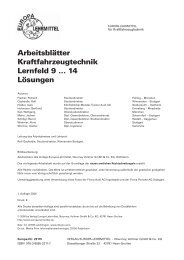Technical English Mechanical Engineering
Technical English Mechanical Engineering
Technical English Mechanical Engineering
Create successful ePaper yourself
Turn your PDF publications into a flip-book with our unique Google optimized e-Paper software.
Material Technology<br />
The following table provides an overview of the general structures:<br />
module<br />
3<br />
Picture 3/2: face-centred cubic 3/3: hexagonally closed packing 3/4: body-centred cubic<br />
Type of structure Element Symbol<br />
Examples<br />
faces-centred cubic<br />
hexagonally closed<br />
packing<br />
body-centred cubic<br />
Aluminium<br />
Nickel<br />
Copper<br />
Magnesium<br />
Zinc<br />
Iron<br />
Chrome<br />
Molybdenum<br />
Al<br />
Ni<br />
Cu<br />
Mg<br />
Zn<br />
Fe<br />
Cr<br />
Mo<br />
The ones mentioned above are ideal models and can, therefore,<br />
be used to explain the structure of metals. However, in reality the<br />
structure is nearly always imperfect. These failures have a basic<br />
influence on the properties of the materials and they are rated by<br />
their dimension. An overview of them is given in picture 3/5.<br />
a) blank position b) interstitial atom<br />
c) additional atom d) substitutional atom<br />
A<br />
B<br />
C<br />
A<br />
B<br />
A<br />
B<br />
C<br />
A<br />
B<br />
stacking failure<br />
A<br />
B<br />
C<br />
A<br />
B<br />
C<br />
A<br />
B<br />
C<br />
A<br />
B<br />
Picture 3/5: Material failures<br />
19



